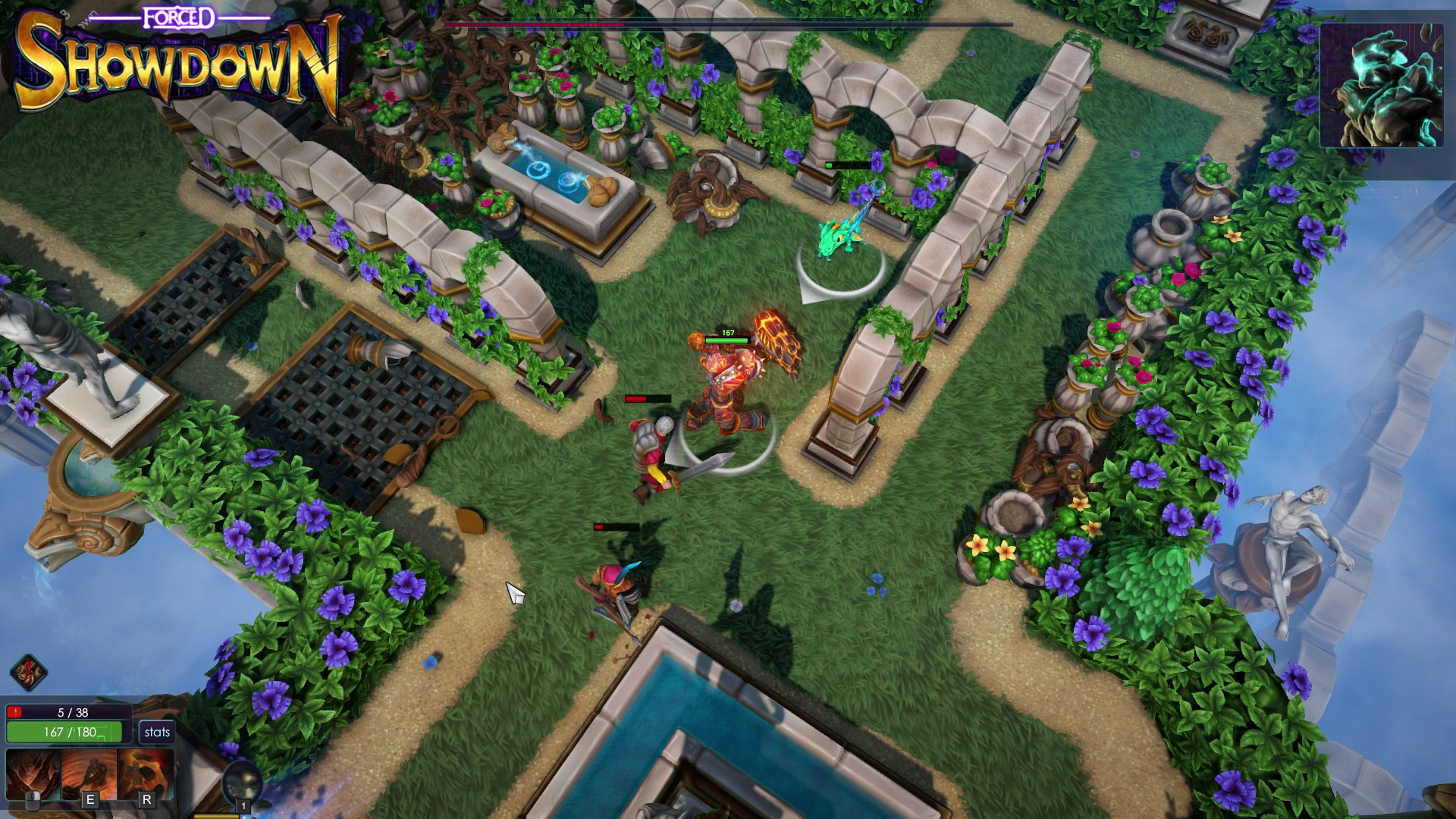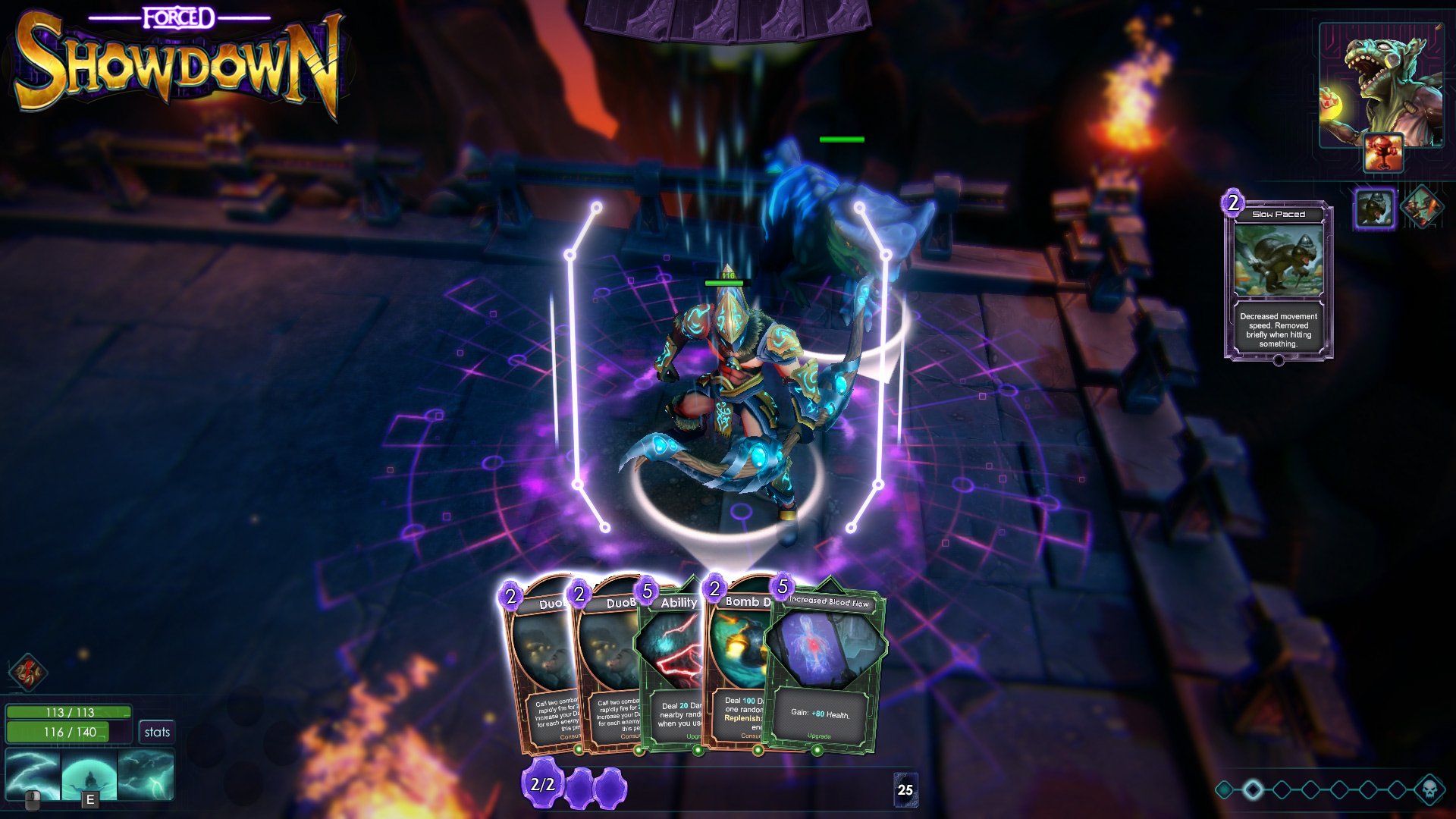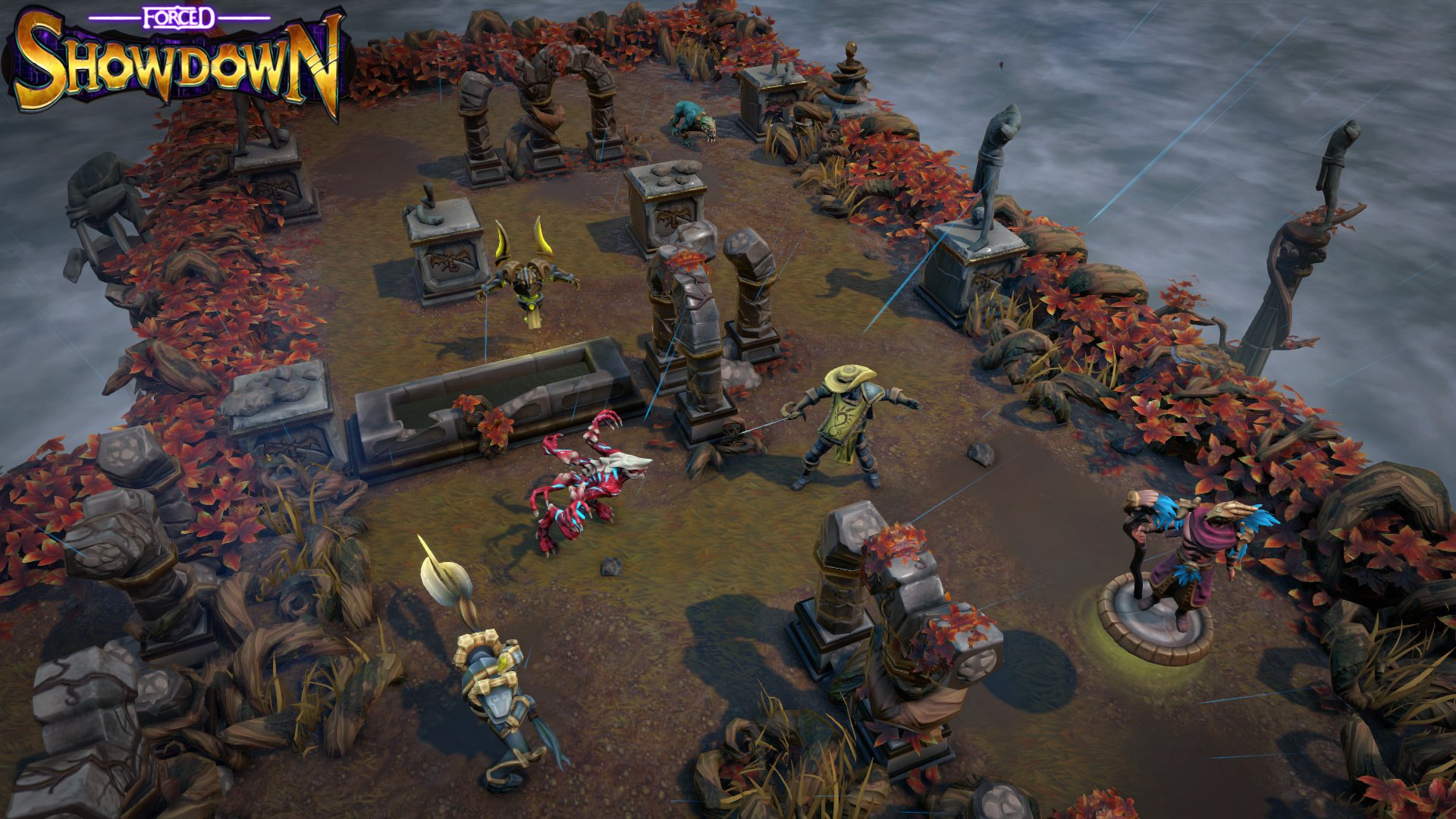A twin-stick shooter, a rogue-lite, and Hearthstone walk into a bar…
Imagine you’re playing a game of Hearthstone at three in the morning. A Twitch livestream of Smash TV plays in the background. Cans of your favorite energy drink line the perimeter of your desk. You play a card, some kind of dragon, and as you turn your attention to the Twitch stream you notice the streamer’s avatar transforms into a similar-looking dragon. Did that really happen? You look at the empty cans, then at your watch. No, you think to yourself. Must be The Dew.
You play another card; this time, three spiders are summoned. A curious glance at the second monitor shows a flood of spiders rushing through each of the doors. The streamer is audibly flipping out as he tries to figure out what just happened. You look at your keyboard and mouse, searching for any clues as to how or why this is happening. You’re freaking out, but it’s also kind of awesome. You reach for your phone to call your best friend.
Before you can open your contacts list, however, you begin to feel a surge in your stomach. You break into a sweat as you realize the unholy amount of caffeine you’ve consumed has given birth to a fiendish vomit monster. Just as the chat explodes with screams of excitement, you blow chunks, Wayne’s World style, all over your keyboard and pass out.
This entire deranged sci-fi comedy movie pitch describes my experience with Forced Showdown, the newest game from Denmark’s BetaDwarf. Forced Showdown is a twin-stick shooter/card-collecting game/rogue-lite/game show that borrows heavily from each of these genres but does little with it, the end result of which is not unlike the end of our gruesome tale. Had the developers chose to focus on what makes each of these genres great instead of throwing them into the blender willy nilly, this could have been a potential indie gem. Instead, we are left picking pieces out of the carpet.
Forced Showdown casts you, the player, as a contestant in a galactic game show for, you know, kicks. The concept serves more as a backdrop to the action than as a catalyst, which is fine as this allows players to jump right into the thick of it. A brief tutorial explains the basics, though those familiar with Hearthstone will feel right at home. Players will move about a randomly generated map using the WASD keys to move and the mouse to aim (insert twin-stick shooter checkmark here). Players must battle their way through eight contained arenas before reaching the final boss.
Every arena adds one to the mana pool, so as the game progresses, players will be able to utilize more powerful cards. Health management is vital as it carries over from battle to battle, but cards played will also carry over. Coins earned during each battle can be used to acquire additional cards, and boons are unlocked after each boss is defeated. On paper, this all sounds great. It’s in the execution that everything begins to fall apart.
Forced Showdown is hard, really hard, and not always rightly so. Being rogue-lite in nature, player death is met with a total reset. The only progress that carries are unlockable fighters, coins, and cards earned. Boons, which are bonuses earned after defeating a boss, are lost upon player death, though they are essential to progress as they offer increases to health and damage for both your character and companion. There are no checkpoints in Forced Showdown; it’s all or nothing. And while that may sound exciting for someone with a gambling problem, for most players that means a lot of work with nothing to show for it.
For example, there are only two ways to increase your health in Forced Showdown: boons or by playing certain cards. Boons are only unlocked after a boss is defeated, so cards will be the most likely way for players to increase their health (and therefore, increase their chances of making it through the next fight). However, all health is reset after death, regardless of boons unlocked or bosses defeated. In games like Bloodborne or the Souls games, players at least have opportunities to level up and permanently increase their health, damage, and other attributes. Those games are also punishing, but still give players a means of progression. By contrast, progression is hard to measure in Forced Showdown, to the point that it seems even the developers don’t know how it works.
The only takeaway from death in Forced Showdown (besides the inevitable “Why am I still playing this?”) are coins and character unlocks. Coins can be spent on one thing, and that’s the Wheel of Fortune, a name that lacks both originality (and a pending copyright infringement suit). A spin of the wheel will grant players one random card or more coins. The main gripe with this is that it forgets the one of the primary reasons people play CCGs in the first place: the pack. It is an unwritten rule that all CCGs must have blind packs that contain at least one rare card, along with several more common ones. It’s Skinner Box 101, and it’s the reason why I still own Pokémon cards despite never learning how to play. By reducing the rewards to just one card of unknown type, there was nothing compelling me to even spin the wheel. The default deck works fine for most battles, and with everything procedurally generated, it’s hard to say what the point is of even constructing a deck in the first place.
As for character unlocks, the game goes out of its way to make it frustratingly obtuse. There is a tab labeled “Quests,” something I did not even discover on my first playthrough. Click it, and you will a series of boxes connected by lines. Some are checked, some are blank, and most will have question marks. Completing quests will unlock additional characters (of which there are four) and companions. But the objectives that must be completed are mostly hidden until discovered by the player. I found no incentive in measuring my progress for any of these quests, as I unlocked most of the characters simply by playing. On the one hand, it will be very easy for players to earn additional characters, skins, and companions. However, this ease makes the quest system almost unnecessary, a word I found myself saying a lot more throughout the course of my time with the game. Again, the sense of progression is somewhat lost.
All of this could be forgiven if the gameplay itself were compelling and unsurprisingly it’s not. While the controls are solid enough, there is little in terms of enemy variety. Some are big, some are small, some might swing a hammer at you, but don’t ask me what their names are. Shoot them before they shoot you, and that’s about it. I do remember encountering a tank that had a rocket constantly encircling it, which forced me to get in close and change my strategy a bit. That was nice.
Maps are small, a detail to be thankful for as it will give the player a chance to yawn in between battles (Can a game be both boring AND hard? -Socrates). While most enemies are fodder, any one of them that touches you can do major damage. Boss battles were the only moments where the game actually felt engaging, with moments that felt like I was playing a sort of fantasy bullet-hell shooter. A shame, then, that the bosses looked just as uninspired as the rest of game.
The art direction for the game could be considered an homage at best and a fraud at worst. I am aware that this game uses some of the same characters and art style as their previous game FORCED, which is fine. However, coupled with their heavy borrowing from franchises like Hearthstone, one would not be faulted for assuming this was a Blizzard game. The use of colors and textures look straight out of Diablo or Heroes of the Storm. The first character you play as, known as the Squire of Light, looks like Magneto and a medieval Templar had a baby. One of the bosses goes by Ratbo. He’s a rat who wears a bandana…like Rambo. Get it?
Their attempts at humor and personality are unfortunately bogged down by lazy design. Playing this game, you can see the intent of the developers as genuine. Almost like a love letter to their favorite games and genres… if it were written in crayon. While that may be okay if this were a five year old after their first day at kindergarten, in the modern indie gaming landscape this is just disappointing.
I really wanted to like Forced Showdown. Maybe there’s something about it that just didn’t *click* with me. Too many half-baked ideas does not a casserole make, my mother always said. If they had taken the time to expand on what makes each of the genres compelling, this could have been a whole different review. Instead, it’s a hot mess on your keyboard.
-
Easy to learn
-
Simple, easy controls
-
Every time the announcer says "Arena Completed!"
-
Too many genres without fulfilling what makes each one compelling
-
Card collecting and deck building borders on unnecessary
-
Derivative character/art design
forced-showdown
-
forced-showdown #1

-
forced-showdown #2

-
forced-showdown #3

-
forced-showdown #4

-
forced-showdown #5

-
forced-showdown #6

-
forced-showdown #7

-
forced-showdown #8

-
forced-showdown #9

-
forced-showdown #10

-
forced-showdown #11

-
forced-showdown #12

-
forced-showdown #13

-
forced-showdown #14

-
forced-showdown #15

-
forced-showdown #16

-
forced-showdown #17

-
forced-showdown #18

-
forced-showdown #19

-
forced-showdown #20

-
forced-showdown #21

-
forced-showdown #22

-
forced-showdown #23

-
forced-showdown #24












